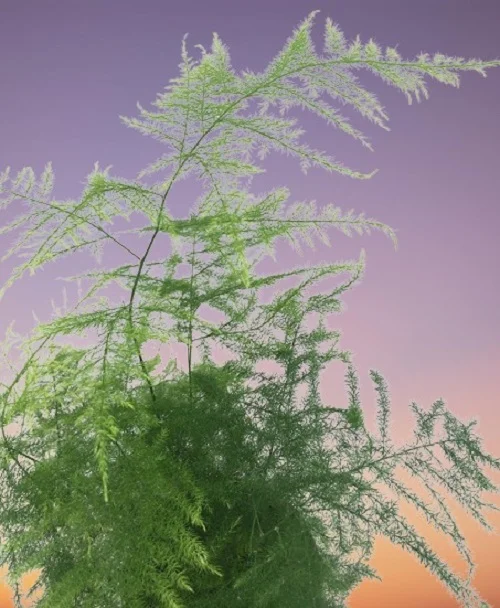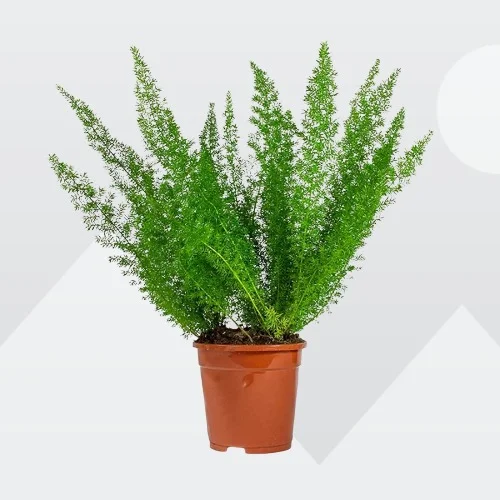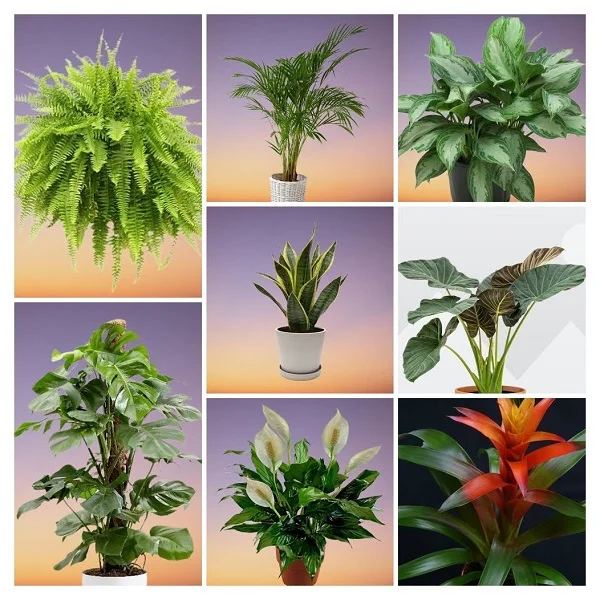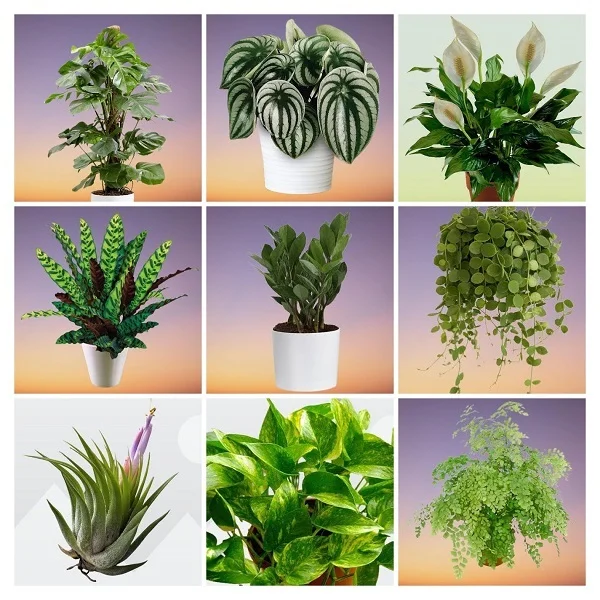Asparagus plumosus (Asparagus Fern) Care Indoors, Common Problems and Solutions
Some links in this post may be affiliate links
Asparagus plumosus (Asparagus Fern) prefers medium to bright indirect light, average warmth, moderate humidity and moderately moist, rich, well-drained soils coupled with weekly feeding in the growing season.
Asparagus Fern is a delicate yet resilient houseplant. Whether you are a beginner or a seasoned plant enthusiast, this guide will help you understand everything about Asparagus plumosus, from watering and light conditions to pest management.
Asparagus plumosus also called Asparagus Grass, Lace Fern, Climbing Asparagus or Ferny Asparagus is among the popular ornamental Asparagus Ferns and is grown for the gracefully, drooping, feathery foliage which is often used in floral arrangements.
Though called a Fern, Asparagus plumosus is not among the True Ferns and is much easier to grow than true ferns. The 'leaves' in Asparagus Fern are really needle-like branches.
The cascading growth habit makes Asparagus plumosus ideal for a hanging basket, a pedestal, tabletop or desktop where the branches can cascade downwards beautifully.
Ensure that the arching branches are not impeded by other plants so that they can beautifully display their beauty. It can also be grown as an outdoor container plant.
Ferny Asparagus bears thick, tuberous roots which store water and enable the plant to go for a considerably long period without being watered. These characteristics place it among the drought-tolerant plants that you may grow in any space.

Botanical name: Asparagus plumosus
Synonym: Asparagus setaceus
Family: Asparagaceae
Sufamily: Asparagoideae
Common names: Asparagus Fern, Asparagus Grass, Lace Fern, Climbing Asparagus, Ferny Asparagus
Origin
Asparagus plumosus (Asparagus Fern) is native to Southern and Eastern Africa.
Invasiveness
According to Mark Tancig (University of Florida), Asparagus Ferns have been found to be invasive in some regions. Avoid growing Asparagus Ferns in the ground and dispose them by burning as they grow vigorously, spreading across and scrambling up other plants.
Is Asparagus plumosus toxic to pets?
Yes. Asparagus plumosus like other Asparagus Ferns is toxic to humans and pets as indicated by ASPCA. If the berries are ingested, they can cause vomiting, diarrhea and abdominal pain. If handled with bare hands, the berries can cause contact dermatitis.
The foliage of mature plants can develop sharp spines on the branches which can cause skin irritation if handled with bare hands. Therefore, always wear gloves when handling Asparagus Grass.
Can I grow Asparagus plumosus outdoors?
Yes. In warm climates (USDA zones 9-11), Asparagus plumosus can be grown outdoors in shaded garden beds or hanging baskets. In cooler regions, it should be brought indoors during winter.
Where to Buy
Asparagus ferns are a beautiful addition to your collection, you may obtain the ferns online from Etsy (Link to Etsy).
How do you care for Asparagus plumosus indoors?
To care for Asparagus plumosus indoors give it medium to bright indirect light, average warmth of 16-280C, moderate humidity of 50-55% and moderately moist, rich, well-drained soils coupled with weekly feeding during the growing season.
Asparagus Fern care needs repotting only when it becomes pot-bound. Pruning is required to keep it neat as well as reduce pest and disease infestations. Keep reading for more on these growing conditions and how to achieve them.

Light Requirements
Where should I place my Asparagus plumosus?
Asparagus plumosus grows best in medium to bright indirect light conditions. Place it near a brightly-lit window away from direct sunlight as it can scorch the leaves.
Too little light may cause the leaves to loss their color, turning them yellowish and the plant becomes leggy. Therefore, if the natural lighting is not sufficient, use grow lights to supplement it.
Regularly rotate the pot to ensure that the plant receives light from all sides for an even growth to prevent lopsided growth.
Watering
How often should I water Asparagus plumosus?
Water Asparagus plumosus thoroughly in spring and summer while allowing the top 2-3 inches of soil to dry a little between waterings. Keep the soil moderately moist and avoid overwatering to prevent yellowing and rotting.
Decrease watering in fall and winter to maintain the soil slightly moist as growth is reduced at this time. Do not allow the soil to dry out completely to avoid leaf drop and browning.
Once in a while, water the fern from the bottom to ensure that the soil ball is thoroughly wetted.
Use room temperature water to avoid plant shock which can result in reduced growth and leaf drop. Avoid hard water; use rain water or filtered water to avoid browning of leaves.
Ensure that the pot has a drainage hole and that the soil is free-draining to avoid getting soggy soil as it can lead to rotting and death of the fern.
Temperature and Humidity
Asparagus plumosus thrives in average warmth of 16-280C. Though it can adapt to a wide range of temperatures, constantly high temperatures can damage the plant.
Asparagus Fern has no need for extra humidity, moderate humidity of 50-55% is enough for this plant. However, it benefits from occasional misting of the leaves especially when the temperatures are too high.
Feeding
What is the best fertilizer for Asparagus plumosus?
Feed Asparagus plumosus with a balanced, liquid fertilizer every 2-3 weeks during the growing season (spring and summer). Too much fertilizer can lead to yellowing and leggy growth.
Do not feed it during the cold season (fall and winter) as growth is reduced and may lead to fertilizer burn; browning leaves, and death of the plant.
Potting Soil
What is the best soil for Asparagus plumosus?
The best potting soil for Asparagus plumosus is a rich, well-draining potting mix to prevent it from getting soggy while providing the required nutrients. A mix of peat, perlite, and compost is ideal for this fern.
Repotting
How often should I repot my Asparagus Fern?
Repot Asparagus plumosus every 1-2 years at the beginning of the growing season (spring), only when it has become pot-bound; when the roots begin to grow through the drainage holes.
Use a pot 1 size larger than the current one and ensure that the pot has a drainage hole to avoid soggy soil as it can lead to root-rot. Check out these pots with dainage holes on Amazon.
You may divide a large Ferny Asparagus during repotting and pot the sections in individual pots to multiply your plants.
Pruning & Grooming
How to prune Asparagus Fern?
Pruning Asparagus plumosus involves:
- Cutting back of the old stems to make room for new growth and encourage a bushy growth.
- Trimming the dead leaves and branches to keep the fern tidy and also reduce pest and disease infestations.
Gently wipe down the leaves or rinse the plant under a soft stream of water occasionally to get rid of dust which can hinder photosynthesis.
Asparagus plumosus Propagation
Asparagus plumosus (Asparagus Fern) propagation is done from seeds, cuttings or by plant division at the beginning of the growing season (spring to early summer). The easiest method of propagation is by plant division.
Learn how to propagate Asparagus Ferns by 3 easy methods.

Asparagus plumosus Problems & Remedies
Asparagus plumosus (Asparagus Fern) problems are yellowing and dropping leaves, brown leaves, plant dying, leggy growth, brown leaf tips, pests, and diseases among others. Keep reading for more on these problems, their remedies and solutions.
Yellowing and dropping leaves
Why are the leaves of my Asparagus Fern turning yellow and falling off?
Yellowing and dropping leaves on your Asparagus plumosus is caused by too little light, inconsistent watering, temperature stress, and soggy soil.
How to fix it
Too little light: Position the fern in a brighter spot or instal a grow light if the natural lighting is inadequate.
Inconsistent watering: Do not water on a schedule. Water when the top 2-3 inches of the soil feel dry but do not allow the soilball to dry out completely.
Temperature stress: Keep the plant away from drafts emanating from heat sources, AC units, windy doors and windows among others to maintain temperatures of 16-280C.
Soggy soil: Use a well-draining soil and a pot that has a drainage hole.
Check out these 12 Reasons Asparagus Fern Leaves are Yellowing and Dropping (with solutions).
Brown leaves
Why are my Asparagus Fern leaves turning brown?
The main causes of brown leaves on your Asparagus plumosus are inconsistent watering, temperature stress, direct sunlight, and aging.
How to fix it
Inconsistent water: Water when the top 2-3 inches of soil dry. Never allow the soil to dry out completely.
Temperatute stress: Protect the plant from drafts emanating from AC units, heat sources, windy doors and others.
Direct sunlight: Keep the fern away from direct sunlight or use a light curtain to filter the sunshine.
Aging: This is a natural process; as the fern matures the lower leaves turn brown and begin to die.
Plant dying
Why is my Asparagus Fern dying?
Unexplained death of your Asparagus plumosus is caused by root-rot disease which is enhanced by soggy soil. The thick, tuberous roots store water therefore soggy soil will cause rotting and death of the fern.
How to fix it
- Carefully remove the fern from its pot and inspect the roots.
- Trim the brown-black, mushy roots and treat the healthy roots with a copper-based fungicidal solution as indicated on the label.
- Disinfect the pot with the fungicidal solution or use a fresh pot to repot the plant in fresh, well-draining soil.
- Do not water the plant immediately and keep it dry for 5-7 days before you can resume watering.
- Use a pot with a drainage hole and well-draining soil to prevent the soil from getting soggy.
- Lessen watering in fall and winter as growth is slowed at this time; keep the soil slightly moist.
Leggy growth
What to do if my Asparagus Fern is too leggy?
Leggy growth on your Asparagus plumosus is caused by lack of pruning, low light, and poor feeding.
How to make Asparagus Fern bushier?
Lack of pruning: Trim the leggy stems to encourage a bushier growth.
Low light: Position the fern infront of a large, brightly-lit window or use a grow light if you do not have enough light in your home.
Poor feeding: Both underfertilizing and overfertilizing can cause leggy growth. Therefore, feed the fern with a balanced, water-soluble fertilizer every 2-3 weeks in spring and summer. Ensure to follow the manufacturers instructions.
Brown leaf tips
Why are the tips of my Asparagus Fern turning brown?
Brown leaf tips on your Asparagus plumosus are due to dry air, underwatering, and direct sunlight.
How to fix it
Dry air: Use a wet pebble tray or a humidifier to raise humidity. You may also grow the plant in a well-lit bathroom or group the plants together.
Underwatering: Water when the top 2-3 inches of soil dry but never allow the soil to dry out completely.
Direct sunlight: Keep the plant away from direct sunlight or use a light curtain to filter the sunlight.
Pests
Common pests on Asparagus plumosus are are aphids, mealybugs, spider mites and whiteflies whose infestation is enhanced by underwatering and dry air.
How to fix it
- Isolate the affected fern to prevent spread to the other plants.
- Treat the infested plant with neem oil or insecticidal soap as per the manufacturers instructions.
- Regularly check underneath the leaves for these pests and carry out timely control measures.
- Keep the plant properly pruned and increase humidity to discourage pest infestation.
Diseases
Asparagus plumosus is susceptible to crown-rot and stem-rot which is prevalent in poorly ventilated and overwet conditions. It is characterized by softening and rotting of part of the stem or crown which spreads rapidly and kills the plant. The disease is difficult to treat.
How to fix it
- Seperate the affected fern and cut away and discard or burn the diseased parts to prevent spread to the other plants.
- Keep the soil on the drier side. Avoid soggy soil by ensuring that the soil is free-draining and the pot has a drainage hole.
- Improve ventilation to ensure that there is free air flow for the fern.
- If the plant is too far gone, discard or burn it. Discard its pot and soil to minimize spread to the rest of the plants.
Conclusion
Asparagus plumosus (Asparagus Fern) is a stunning indoor plant that brings greenery and elegance to any space. With the right care, including proper watering, humidity, and pruning, it will thrive for years. By following these guidelines, you can enjoy the beauty of Asparagus Fern in your home with minimal hassle.
You liked it? Share on social media.
Related Content
Amazon Associates Disclosure
Homeplantsguide.com is a participant in the Amazon Services LLC Associates Program, an affiliate advertising program designed to provide a means for sites to earn advertising fees by advertising and linking to amazon.com.





